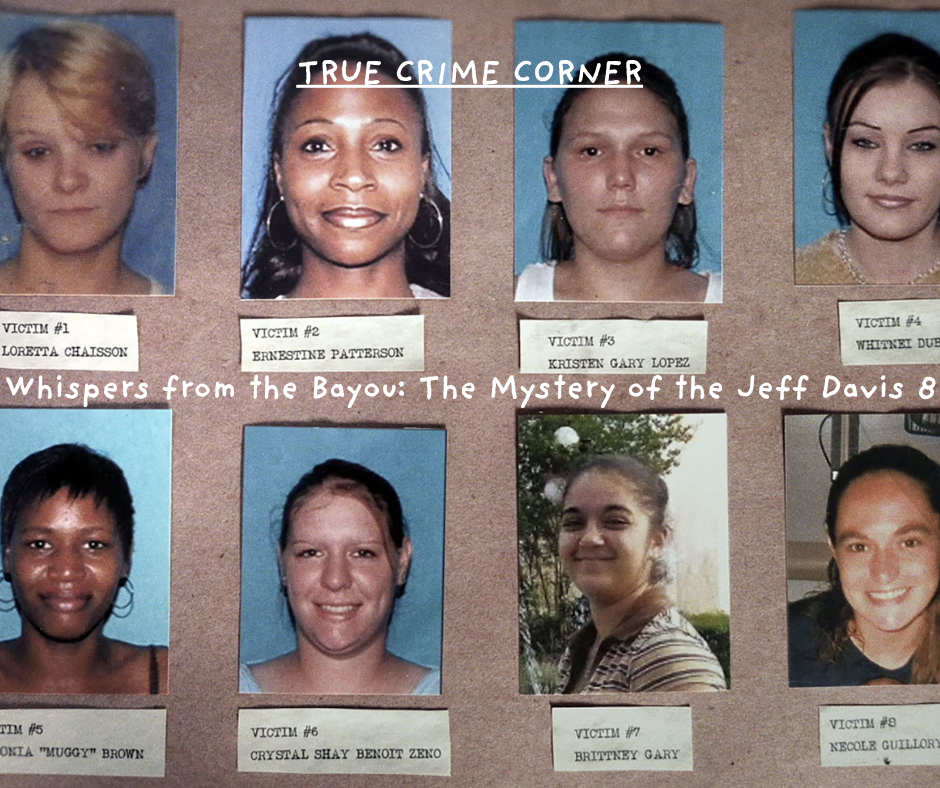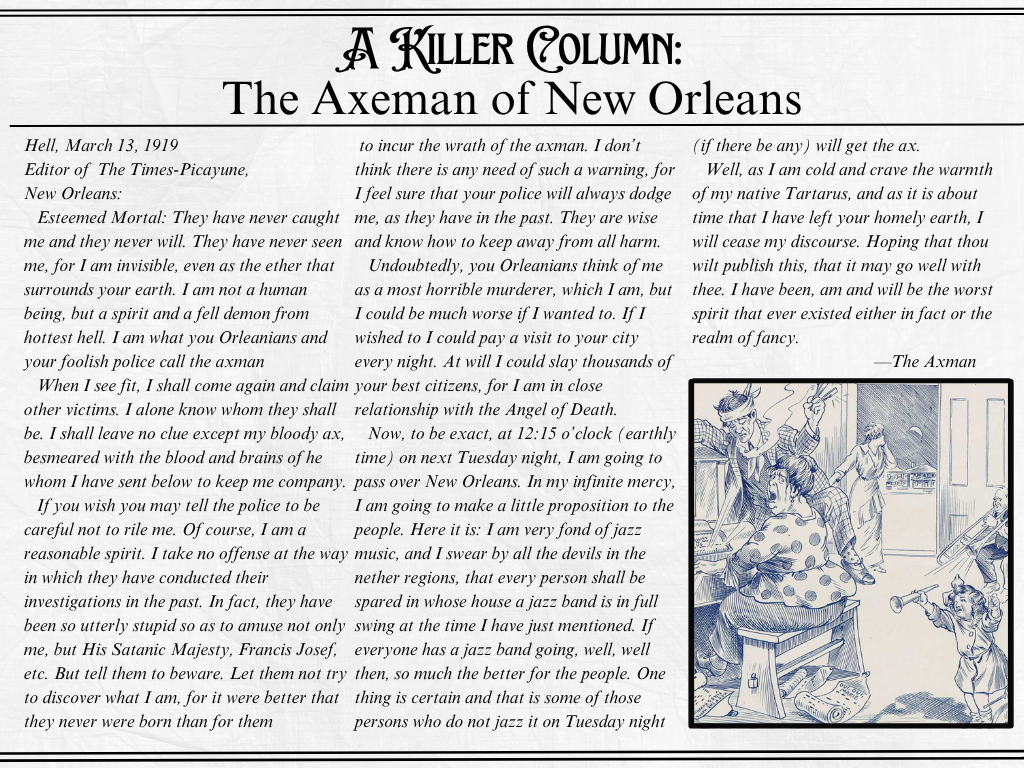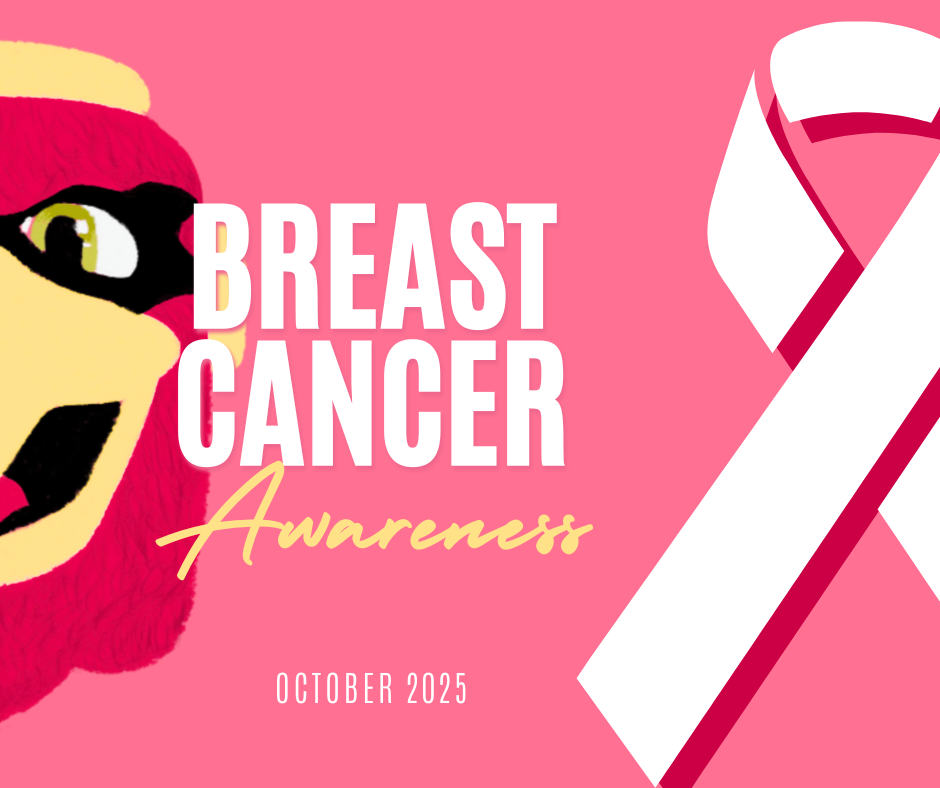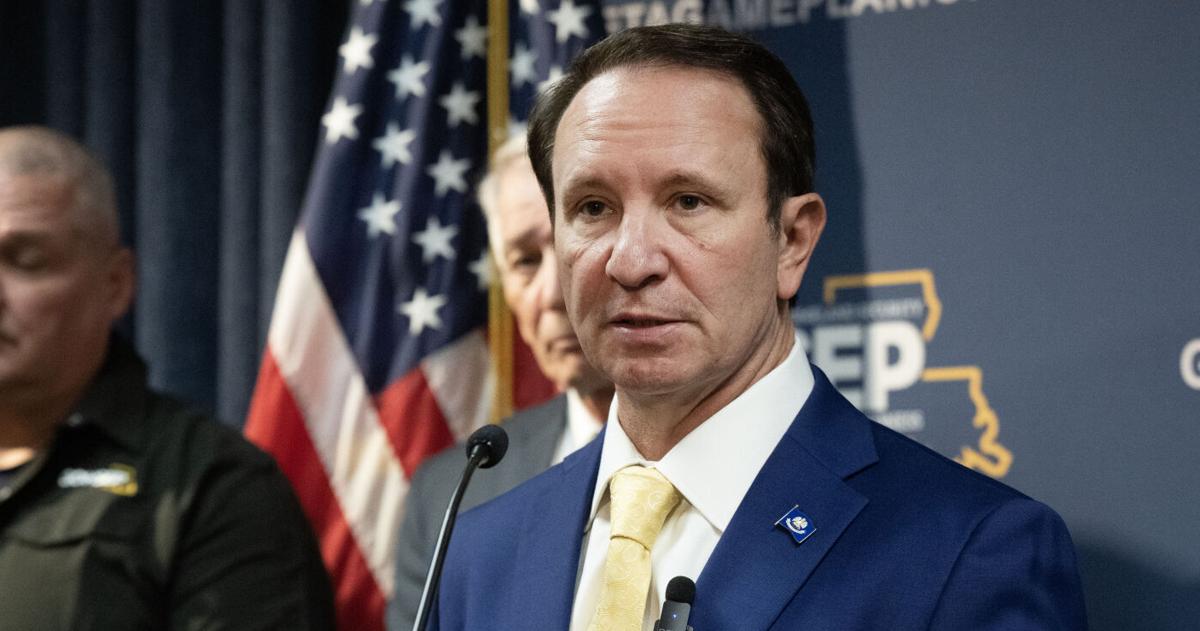Author’s note:
Louisiana has a complex and deeply rooted history with crime, justice and systemic inequality. In each installment, I strive to approach these cases with care, respect and a commitment to truth—whether the story involves a decades-old cold case, a recent courtroom development or an unsolved mystery still haunting a small town.
Many of these stories involve unanswered questions, overlooked voices and difficult truths. My goal is not to sensationalize, but to shed light, on the facts, the failures and the humanity behind each case. I also hope to provide readers with a deeper understanding of the broader social and legal landscapes that shape how justice is sought, and sometimes denied, in our state.
Thank you for reading, for caring and for remembering those whose stories deserve to be told fully and honestly.
Between 2005 and 2008, the swamps and canals surrounding Jennings, Louisiana, became the final resting place for eight women. These victims, known as the Jeff Davis Eight (or the Jennings Eight), were all connected by their troubled lives on the margins of society. To this day, all eight murders remain unsolved.
On May 20, 2005, police fished the decomposed body of 28-year-old Loretta Lynn Chaisson Lewis out of a canal on the outskirts of Jennings. A known crack addict, Lewis’s death was initially dismissed by many as a tragic but predictable outcome of the drug trade flourishing along the I-10 corridor.
On June 18, the body of 30-year-old Ernestine Marie Daniels Patterson was discovered in a different canal south of Jennings. Two men, Byron Chad Jones and Lawrence Nixon, were held for second-degree murder. However, the charges were later dropped.
On March 18, 2007, a third victim, 21-year-old Kristen Gary Lopez, was found in a canal. She fit the same profile as the first two, and suspicion fell heavily on Frankie Richard and his niece, Hannah Conner. Both were arrested but later released due to a lack of conclusive evidence.
Over the next year and a half, the bodies of four more women—Whitnei Dubois, 26; Laconia “Muggy” Brown, 23; Crystal Shay Benoit Zeno, 24; and Brittney Gary, 17—were discovered in and around Jennings. Most of the bodies were decomposed and showed almost no signs of trauma, leading the medical examiner to believe their deaths resulted from asphyxiation.
Facing public pressure, Jefferson Davis Parish Sheriff Ricky Edwards announced the formation of a multi-agency task force in Dec. 2008 to investigate the murders. Despite this increased surveillance, the killer remained at large. In August 2009, the body of Necole Guillory, 26, was spotted off I-10 in nearby Acadia Parish. Guillory’s death did not provide any new leads to the task force.
That fall, Sheriff Edwards publicly acknowledged what many had long suspected: the deaths were likely the work of a “common offender.” The task force more than doubled the reward for information for information leading to the killer.
At the heart of the allegations was Frankie Richard, who admitted to being a crack addict and having sex with most of the victims. He was reportedly the last person seen with Kristen Gary Lopez. Afterwards, two female inmates came forward, alleging that the Sheriff’s Office had disposed of evidence in the Lopez case at Richard’s behest. These claims were ignored, and the sergeant who took the statements was forced out of his job.
Further eroding public trust, the sheriff’s chief criminal investigator, Warren Gary, was accused of purchasing a truck suspected of being used to transport a victim’s body, allegedly to discard it as evidence.
In 2009, the sheriff ordered that every investigator working on the Jeff Davis 8 case be swabbed for DNA in response to the accusations against investigators. However, the office refuses to comment on the results of the DNA testing.
Byron Chad Jones and Lawrence Nixon, a cousin of the fifth victim, Laconia Brown, were briefly charged with second-degree murder in the Ernestine Patterson case. However, the sheriff’s office did not test the crime scene until 15 months after Patterson’s murder and found that the scene “failed to demonstrate the presence of blood.”
The case of the Jeff Davis Eight remains one of the most haunting mysteries in modern American history. With eight women dead under suspicious circumstances in a small Louisiana town, the lingering questions about corruption, misconduct and systemic failure continue to cast a dark shadow over the investigation.
Despite years of speculation and investigation, justice has yet to be served, not only for the victims but for a community still seeking answers.








